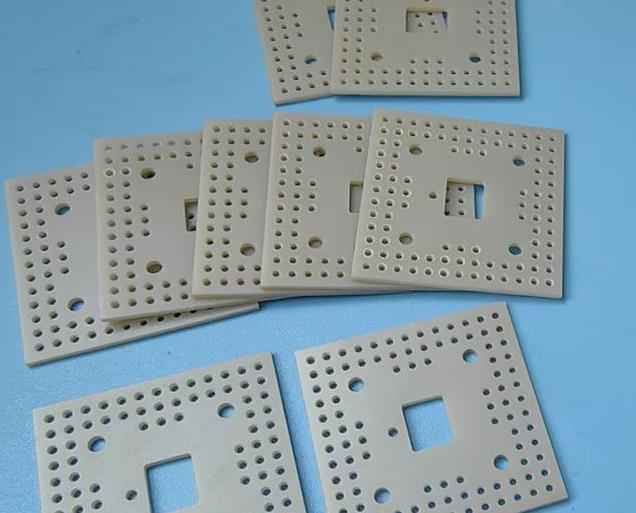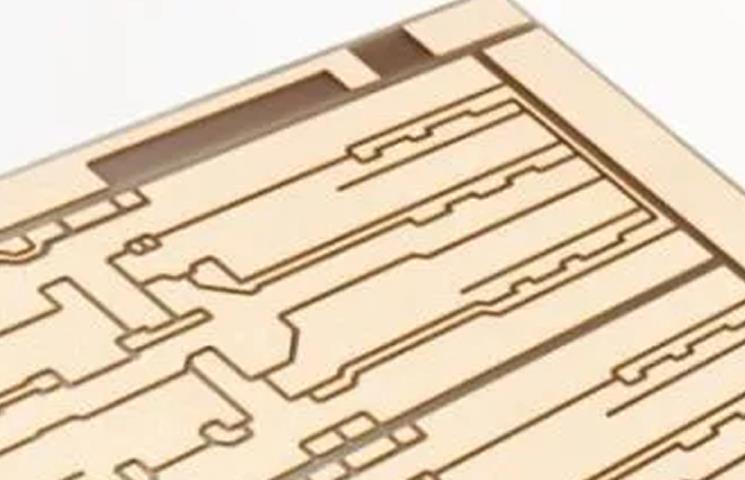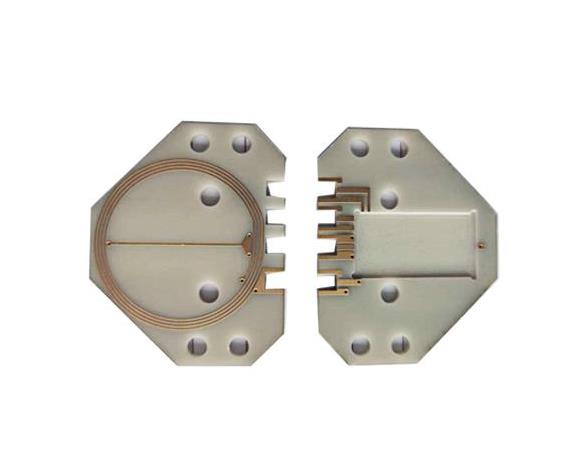Take you to understand the aluminum nitride ceramic plate
Aluminum nitride is a covalently bonded compound with excellent thermal, electrical, mechanical and chemical properties. The preparation technology is diverse and has been industrialized. Used in packaging heat dissipation substrate, semiconductor equipment, heat conduction filler and so on. Stable performance at high temperatures, can be used for heat exchange, refractories and optical components.

Aluminum Nitride (AlN) is a hexagonal crystalline covalent bonding compound with the structure of brazed zinc ore. Lattice constant a = 0.3110 nm, c = 0.4978 nm. The Al atom is hexagonal and the N atom occupies half of the tetrahedral gap. The Al atom forms a distorted [AlN4] tetrahedron with an Al-N bond length of 0.1917 nm along the C-axis and 0.1885 nm in the other three directions. Pure AlN ceramics are colorless and transparent, but appear in a variety of colors due to impurities, usually gray, off-white or light yellow.
Preparation method of aluminum nitride
The main preparation techniques of aluminum nitride are direct nitriding, carbonization reduction, high-energy ball milling, high temperature self-spreading synthesis, in situ self-reaction synthesis, sol-gel method and so on. At present, the main preparation technologies that have achieved industrial production are direct nitriding method, carbothermal reduction method, self-spreading method, in-situ synthesis method and chemical vapor deposition method are moving towards industrial mass production.
Aluminum nitride powders produced by different preparation methods have different characteristics. At present, the main preparation technologies that have realized industrial production are direct nitriding method, carbothermal reduction method, and self-spreading method, in-situ synthesis method and chemical vapor deposition method are moving towards industrial mass production.

Properties of aluminum nitride
AlN has the following excellent properties:
1) Thermal properties
The theoretical thermal conductivity of single crystal aluminum nitride can reach 320 W/(m·k), and its thermal conductivity at room temperature is several times that of Al2O3, and the thermal conductivity of beryllium oxide (theoretical value of 350 W/(m·k)) is similar, and non-toxic and harmless. As the temperature increases, the thermal conductivity of aluminum nitride is gradually better than that of beryllium oxide. At room temperature, the coefficient of thermal expansion of aluminum nitride (4.5×10-6 ˚C) is close to that of silicon (3.5 to 4×10-6 ˚C).
2) Electrical properties
At room temperature, aluminum nitride is an excellent insulating material, its resistivity is about 10-16 Ω∙m and breakdown voltage can reach 15 kV/mm; The dielectric constant of aluminum nitride and alumina is similar, up to 8.9F /m (1 MHz), and the dielectric loss of aluminum nitride is about (3~10)×10-4 (1 MHz).

3) Mechanical properties
At room temperature, the hardness of aluminum nitride ceramics is about 12 GPa, the theoretical density is about 3.26 g/cm³, the Young's modulus is 308 GPa, and the Mohs hardness is 7~8. Aluminum nitride is decomposed at about 2200 ℃, and the bending strength can reach 300 MPa at room temperature. The strength of aluminum nitride is not affected by temperature, such as when the temperature is 1300 ℃, the high temperature strength of aluminum nitride is reduced by about 20% than the strength at room temperature, and the strength of aluminum oxide and silicon nitride is reduced by 50% overall at high temperature.
4) Chemical properties
Aluminum nitride material is resistant to high temperature and corrosion, can be stable in the molten salt of gallium arsenide and other compounds, and aluminum, copper, nickel and other metals can not infiltrate aluminum nitride material. The temperature at which aluminum nitride begins to oxidize is about 700 ° C ~800 ° C, and the use of aluminum nitride materials at normal temperature does not need to consider the problem of device oxidation. Aluminum nitride reacts easily with water vapor in the air, so it needs to be stored in a dry and cool place.

Application field of aluminum nitride
1) Package cooling substrate
Power semiconductor devices, large-scale integrated circuits, high power device LED packaging substrate, laser heat sink substrate.
2) Semiconductor equipment parts
Electrostatic sucker (ESC), aluminum nitride heating plate (Heater), ceramic nozzle, high temperature corrosion resistance parts, etc.
3) Thermal conductive packing
As a thermal conductive filler, it is used to add in resin or plastic to improve the thermal conductivity of resin or plastic.
4) Semiconductor materials
AlN wafers are excellent substrates for high power, high frequency electronic devices and optoelectronic devices such as ultraviolet detectors, ultraviolet lasers and deep ultraviolet leds.
5) Heat exchange device
As a high temperature corrosion resistance, heat shock resistance and heat exchange material, it is used in heat exchangers of Marine gas turbines and heat resistant components of internal combustion engines.
6) High temperature refractory materials
It has the characteristics of non-wetting with aluminum, calcium and other metals, and can be used as crucible, furnace lining, protective tube, pouring mold and so on.
7) Optical components
Pure AlN ceramics are colorless transparent crystals with excellent optical properties, and can be used as high temperature infrared Windows and infrared deflectors for the manufacture of electronic optical devices.
8) Piezoelectric film
AlN films have excellent piezoelectric and acoustic surface wave properties, which are used in piezoelectric MEMS sensors and actuator components, and surface acoustic wave devices (SAW).